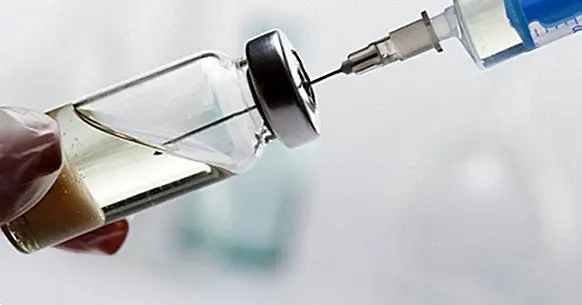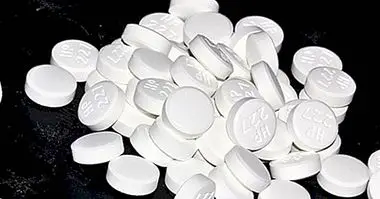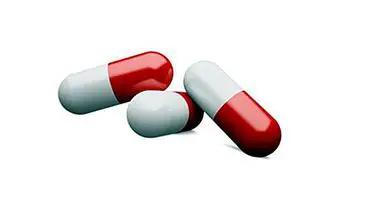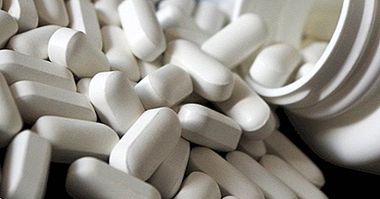Paliperidone palmitate: uses and side effects
Psychotic disorders are some of the most known and striking for most of the population, with schizophrenia being the most well-known disorder of this type. Research on these problems has generated different pharmacological treatments to reduce and maintain controlled symptomatology of those who suffer from it. One of these drugs, relatively recent, is paliperidone .
However, despite the usefulness of antipsychotics, not always all patients can or do want to take medication orally, or find it cumbersome to take it every so often. For this reason depot presentations have been devised, being an example of this paliperidone palmitate .
- Related article: "Types of antipsychotics (or neuroleptics)"
Paliperidone and paliperidone palmitate: type of drug
Paliperidone palmitate is a type of paliperidone, an atypical or second generation antipsychotic which in turn is the active metabolite of another antipsychotic, risperidone. Paliperidone is a relatively new drug that is highly effective in the treatment of psychotic symptoms such as schizophrenia and schizoaffective disorder, reducing the likelihood of presenting symptoms such as hallucinations, aggressiveness or disorganized behavior.
With regard to paliperidone palmitate itself, we are facing a medication that is administered intramuscularly, by injection . In this type of presentation or administration of the drug is injected into the muscle a crystallized form of, which will be released slowly in the blood over time without the subject must take any pill (it is a presentation depot prolonged release ). This is especially useful for those subjects with memory problems, who find it difficult to determine the intake of pills or who are reluctant to take medication.
A monthly or even quarterly injection is usually done (although this may vary according to the medical center and the patient's symptoms), which must be checked out by a competent medical or healthcare professional . In any case, if you want an oral administration, you can also use paliperidone.
- Maybe you're interested: "Types of psychotropic drugs: uses and side effects"
Mechanism of action
Once injected, paliperidone palmitate will gradually hydrolyze and transform into paliperidone in the body, as the drug is released into the bloodstream.
Paliperidone and paliperidone palmitate are drugs classified as atypical antipsychotics. Its therapeutic action occurs due to its effects when it comes to blocking the dopamine D2 receptors and the serotonin 5-HT2 receptors.
The antidopaminergic action at the mesolimbic level reduces hallucinations and maintains the levels of this hormone so that they do not occur, at the same time that the effect on serotonin makes it difficult for the reduction of dopamine to affect to a great extent other cerebral areas such as the cortex. It also has a slight antagonistic effect on alpha-adrenergic receptors and histaminergic receptors, which generates some of the possible side effects of the drug.
- Related article: "Types of neurotransmitters: functions and classification"
Uses in treatments against disorders
The main indication of paliperidone palmitate is the treatment of the symptoms of psychotic disorders , specifically of schizophrenia. However, unlike other antipsychotics, paliperidone palmitate is not generally used as a treatment for acute psychotic outbreaks, but rather as a maintenance psychotropic drug.
That is, for the treatment of an acute psychotic outbreak in the first place the patient would be stabilized with other drugs (for example paliperidone) and later plan to use paliperidone palmitate to maintain controlled symptoms and prevent new outbreaks.
The exception is found in those cases that even without being stabilized have already shown to have a positive response to paliperidone or risperidone and the psychotic symptoms are mild or moderate. This drug has been approved by the FDA for the treatment of schizophrenia from the age of twelve .
In addition to schizophrenia, it has been shown that paliperidone palmitate is effective in schizoaffective disorder or other problems, being possible its use as an adjuvant treatment of antidepressant medication (although it must be something prescribed by the doctor, since it depends on which medication can interact in a dangerous way for health).
- You may be interested: "The 6 types of schizophrenia and associated characteristics"
Side effects and contraindications
Although paliperidone palmitate is a useful and effective formulation in the maintenance treatment of schizophrenia and has many advantages, it can generate more or less undesirable side effects and may even be contraindicated in some people.
Some side effects that may appear after your administration are the presence of drowsiness, difficulty urinating and urine of brownish or dark coloration , headaches, chills, increased hunger and thirst, weight gain, cold symptoms, visual disturbances, tremors, allergic reactions or inflammation in the area where the injection was performed. Other more serious may be the presence of arrhythmias or tachycardia, hyperglycemia, seizures or hypotension.
Although as an atypical antipsychotic its effect on serotonin reduces the effects on dopamine of the cortex and the tuberoinfundibular dopaminergic pathway, it has been observed that its administration can generate alterations and difficulties in sexuality related to the increase of prolactin, such as a decrease in libido or priapism in men.
As we mentioned some people have contraindicated this drug , should not be treated with him or having to assess with the doctor the suitability or not to do it. Among them we can find patients with cardiac or cardiovascular problems, kidney, stomach or liver.
Neither people with diabetes mellitus (since it can cause alterations in blood sugar levels), subjects with dementia (increases the risk of death during treatment), pregnant women and nursing mothers. Also, it should not be mixed with other medications because can generate interactions between drugs such as lithium salts, levodopa, alcohol , antibiotics and other psychotropic drugs.
Bibliographic references:
- Nussbaum, A.M. & Stroup, T.S. (2012). Paliperidone palmitate for schizophrenia. Cochrane Database of Systematic Reviews, 6. Art. No .: CD008296. DOI: 10.1002 / 14651858.CD008296.pub2.



















